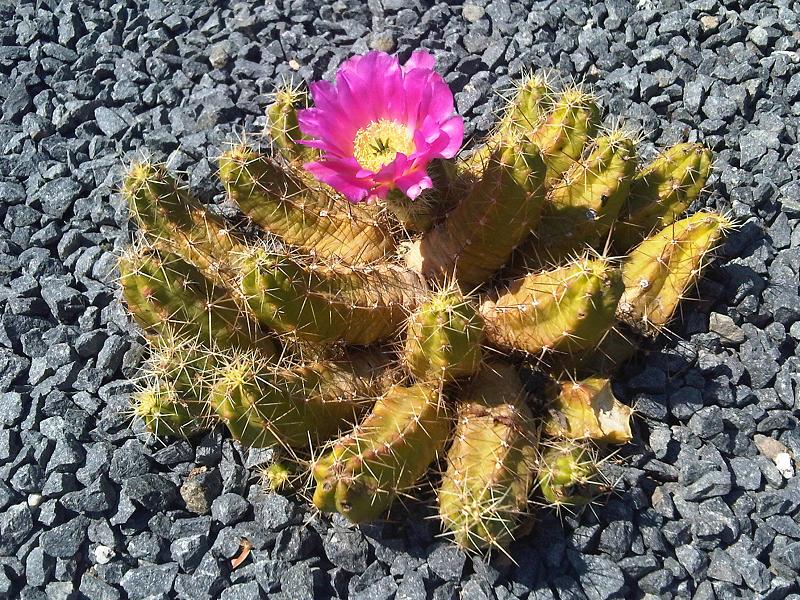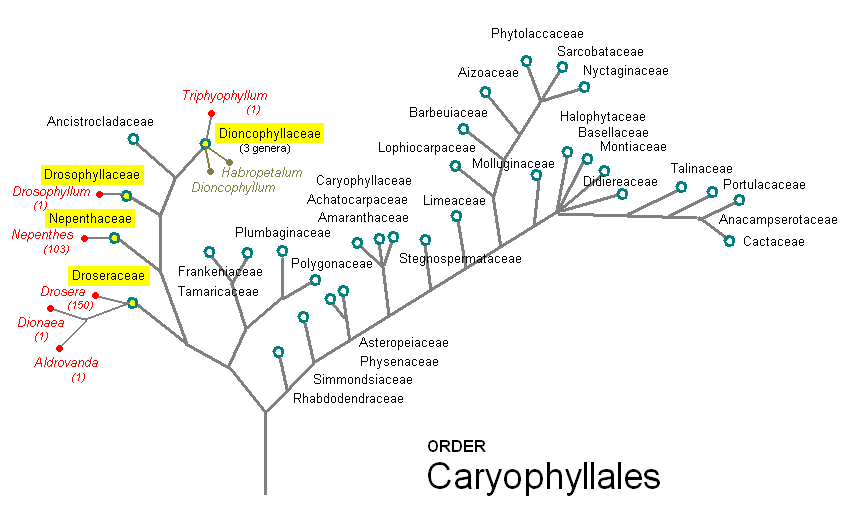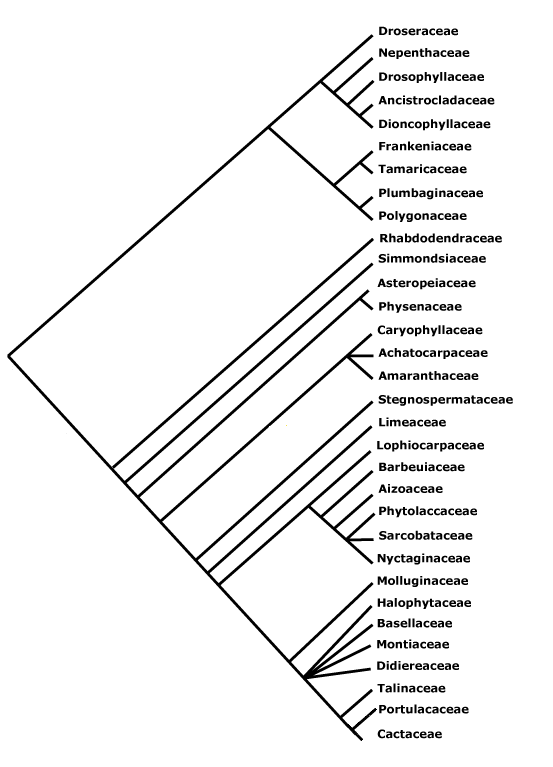Caryophyllales
Heide- carnation (Dianthus deltoides)
The clove -like ( Caryophyllales ) form an order within the angiosperms ( Magnoliopsida ). Among the Caryophyllales includes 33 families, 692 genera and about 11,155 species, which corresponds to 6.3% of Eudikotyledonen. Within the order, there are some crops, such as Sugar beet, spinach, chard, beetroot, rhubarb, amaranth and quinoa.
Description
The simple and most ganzrandigen leaves are mostly opposite. The flowers are usually fünfzählig. The bloom can be differentiated into sepals and petals, but often missing one of the Hüllblattkreise. The carpels are fused into an ovary. A characteristic of a portion of the central Caryophyllales placentation the ovary. Because of this feature was called the order in traditional systems also centrospermae. Most capsule fruits, nuts or berries are formed.
Ecology and occurrence
Many of the families have special adaptations such as salt and drought tolerance, succulence, and physiological characteristics such as C4 photosynthesis or Crassulacean acid metabolism ( CAM). There are several families with insectivorous / carnivorous representatives ( Droseraceae, Nepenthaceae, Dioncophyllaceae ). Its not often you find mycorrhizae. Representatives of the Caryophyllales is found worldwide and mainly in open, often dry, salty or sandy habitats. The majority of the families is herbaceous, woody plants are rather the exception.
System
The closest relatives of Caryophyllales within the flowering plants are not yet clear. Perhaps the Caryophyllales are the sister group to the asteroids. The order is therefore considered standing as isolated and managed as a separate major group within the core Eudikotylen. The relationships within the Caryophyllales are well understood due to a number of phylogenetic studies. The order can be roughly divided into two main groups: Caryophyllales I and II or Polygonids and Caryophylids. As a result, several phylogenetic studies are recognized by the Angiosperm Phylogeny Group more families. Especially the Portulacaceae were s.str in Portulacaceae. (only Portulaca ), and Talinaceae Anacampserotaceae split. Recently, the Microteaceae has been described as an additional new family.
Within the Caryophyllales following families are recognized:
- Achatocarpaceae
- Mesembryanthemum plants ( Aizoaceae )
- Foxtail plants ( Amaranthaceae ) (including Chenopodiaceae )
- Anacampserotaceae
- Ancistrocladaceae
- Asteropeiaceae
- Barbeuiaceae
- Basellgewächse ( Basellaceae )
- Cactus ( Cactaceae )
- Pink Family ( Caryophyllaceae )
- Didiereaceae
- Hook -leaved plants ( Dioncophyllaceae )
- Sundew plants ( Droseraceae )
- Taublattgewächse ( Drosophyllaceae )
- Frankeniaceae
- Gisekiaceae
- Halophytaceae
- Limeaceae
- Lophiocarpaceae
- Microteaceae
- Molluginaceae
- Source herb plants ( Montiaceae )
- Can vegetable plants ( Nepenthaceae )
- Miracle flower plants ( Nyctaginaceae )
- Physenaceae
- Pokeweed ( Phytolaccaceae )
- Plumbago plants ( Plumbaginaceae )
- Buckwheat family ( Polygonaceae )
- Portulakgewächse ( Portulacaceae )
- Rhabdodendraceae
- Sarcobataceae
- Simmondsiaceae
- Stegnospermataceae
- Talinaceae
- Tamarisk ( Tamaricaceae )
Betalain pigments
One of the characteristic features of the Caryophyllales is the production of betalain ( collective term for betaxanthins and betacyans ). Outside the Caryophyllales Betalains have been proven a second time in angiosperms. The evolution of betalains is more complex than previously thought, as evidenced by the position of betalain -producing families in the pedigree of Caryophyllales. Betalains missing demonstrably in the Caryophyllaceae, Lophiocarpaceae, Limeaceae and Molluginaceae. However, these are distributed in the pedigree of Caryophyllales and find themselves at different positions within the betalain - producing lines. Thus, not a single origin of betalain synthesis within the Caryophyllales be accepted, but multiple changes of anthocyanin to betalain production.
Swell
- Philippe Cuénoud, Vincent Savolainen, Lars W. Chatrou, Martyn Powell, Renée J. Grayer, Mark W. Chase: Molecular phylogenetics of Caryophyllales based on nuclear 18S rDNA and plastid rbcL, atpB, and matK DNA sequences. In: American Journal of Botany, Volume 89, No. 1, 2002, pp. 132-144, doi: 10.3732/ajb.89.1.132
- Reto Nyffeler: The closest relatives of cacti: insights from phylogenetic Analyses of chloroplast and mitochondrial sequences with special emphasis on relationships in the tribe Anacampseroteae. In: American Journal of Botany, Volume 94, No. 1, 2007, pp. 89-101, doi: 10.3732/ajb.94.1.89.
- G. Heubl, G. Bringmann, H. Meimberg: Molecular phylogeny and character evolution of carnivorous plant families in Caryophyllales - Revisited. In: Plant Biology, Volume 8, No. 6, 2006, pp. 821-830, DOI: 10.1055/s-2006-924460.
- Bastian Schäferhoff, Kai F. Müller, Thomas Borsch Caryophyllales phylogenetics: disentangling Phytolaccaceae and Molluginaceae and description of Microteaceae as a new isolated family. In: Willdenowia - Annals of the Botanic Garden and Botanical Museum Berlin- Dahlem, Volume 39, No. 2, 2009, pp. 209-228, DOI: 10.3372/wi.39.39201.
- The order in APWebsite (English )








